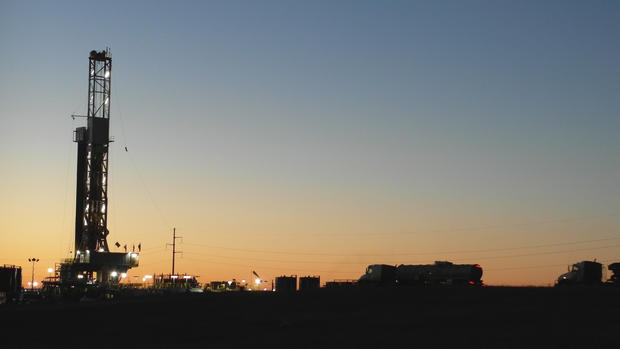North Dakota’s Rig Count Jumped 40 Percent After President Trump Approved Dakota Access Pipeline

Crews work at an oil well site near Williston, N.D., on Wednesday, Oct. 12, 2016. Amy Dalrymple/Forum News Service
North Dakota’s “drilling rig count has jumped 40 percent since early February, when Trump gave final approval to the pipeline,” Reuters reports. “By the end of the year, analysts expect the rig count to rise another 10 percent or more.”
Many critics of the pipeline argued that it was unnecessary. Or even that there was little market demand. Clearly, as we see the impact of the pipeline’s completion on oil development here in North Dakota, those claims weren’t true.
Hess plans to triple the number of drilling rigs it operates in North Dakota this year. The company will move the 30 percent of its existing Bakken production from rail to pipeline once DAPL opens.
Oasis Petroleum Inc (OAS.N), another large Bakken producer, said its 2017 output could rise more than 30 percent. DAPL “is definitely going to give us more options to get our product to market,” Oasis Chief Executive Officer Tommy Nusz said in an interview.
Not every oil company operating in the state is going to use the Dakota Access Pipeline, but they will benefit from the pipeline’s capacity anyway. It will create more capacity on existing pipelines, not to mention rail, and drive down the cost of getting Bakken oil to market overall.
The article notes that both Whiting Petroleum and Continental Resources are projecting a 20 percent increase in output this year. Neither are contracted to use DAPL, but both will benefit from it none the less.
Because, again, one of the big drawbacks to oil development in North Dakota is relatively heavy price of getting the oil out of the state. Increased pipeline capacity reduces those costs and makes the oil play in our state more competitive. That’s on top of ceaseless efforts by the oil industry to drive down the costs of development.
Keep in mind that the cost of producing oil in the Bakken is a moving target. Years ago oil prices had to be north of like $50 – $60 per barrel to justify development. These days that price is much, much lower thanks to everything from increased transport capacity to improvements to the process of creating an oil well.
That’s good news for the state’s economy, not to mention our state budget which has taken a shellacking in recent years.




